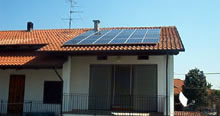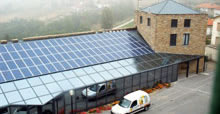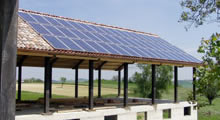Grid connected

Grid-connected photovoltaic solar installations are particular as they work on the basis of energy exchange with the local electrical grid. In practice, in daylight hours the consumer uses the electrical energy produced by his/her own installation, while when there is no light or it is insufficient, or when the consumer requires more energy than his installation is capable of providing, the electrical grid guarantees the supply of necessary electrical energy.

On the other hand, it can occur that the solar installation produces more energy than required by the consumer, and so energy may be absorbed by the grid. In this case we speak of transfer of "surplus" to the local electrical grid.
Grid-connected pv installations thus represent an integrative source, as they provide a contribution to the overall electric budget of the building of various amounts depending on the size of the installation. The placement of photovoltaic modules on roofs and on facades responds to the distributed nature of solar sources and presents various advantages:

- the stabilizing of demand curves, which usually lead to the most costly energy production. It is therefore an interesting alternative, particularly in light of the increasing spread of air-conditioning systems in residential and commercial buildings;
- the installation cost of photovoltaics represents an expense that can be offset in that it can reduce the overall cost of the building: the modules may themselves become construction features that can substitute tiles or glass on facades;
- the adoption of these systems allows for the raising among consumers of a greater "energy consciousness", with positive implications for an increase in rationality and efficiency in the use of electrical energy.

